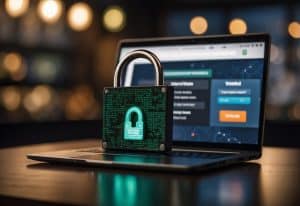The digital revolution has led to a significant increase in the creation and use of digital assets, such as intangible content. These assets have become crucial in our daily lives, transforming industries and changing the way we store and access information. However, this rise also brings with it unique challenges that need to be addressed. These challenges include governance and regulation, as well as concerns regarding access and transferability. To fully take advantage of this digital frontier, it is important to have effective asset management systems in place. In this article, we will explore the rise of digital assets, the importance of asset management systems, and the challenges that need to be navigated.
Key Takeaways
The digital revolution has significantly increased the creation and use of intangible content, known as digital assets. These assets are crucial in our daily lives, transforming industries and revolutionizing information storage and access. However, this rise also poses unique challenges that must be addressed, including governance, regulation, access, and transferability concerns. To fully leverage this digital frontier, effective asset management systems are essential. In this article, we will explore the rise of digital assets, the importance of asset management systems, and the challenges that need to be navigated.
Introduction
Introduction: The Rise and Challenges of Digital Assets
The crypto gift market: an emerging trend in the rise of digital assets
The rise of digital assets has given way to an emerging trend in the form of the crypto gift market. More and more people are embracing digital assets as a means of gifting and exchanging value. This market has gained significant momentum in recent years, and understanding its dynamics and trends can provide insights into the growing importance of digital assets in our modern society.
Crypto Gift Market Trends
Digital assets have revolutionized gift-giving through the emergence of the crypto gift market. This market enables individuals to gift cryptocurrencies, non-fungible tokens (NFTs), and other virtual items. To understand the crypto gift market trends and challenges, it is important to analyze the following aspects:
-
Popularity and Adoption: The crypto gift market is experiencing a significant rise in popularity as more people embrace digital assets. The adoption of cryptocurrencies and NFTs as gifts reflects the growing acceptance and recognition of their value.
-
Market Growth: The crypto gift market is expanding rapidly, driven by the increasing demand for digital assets. This growth is fueled by factors such as the convenience, uniqueness, and potential investment value of crypto gifts.
-
Marketplaces and Platforms: Various online platforms and marketplaces have emerged to facilitate the buying, selling, and gifting of digital assets. These platforms provide a secure and user-friendly environment for individuals to engage in crypto gift transactions.
-
Security and Regulation: As the crypto gift market grows, security and regulatory concerns become more relevant. Ensuring the safety of transactions and protecting users’ digital assets from theft or fraud is crucial. Additionally, governments and regulatory bodies are developing frameworks to address the legal and taxation aspects of crypto gifts.
-
Value and Volatility: The value and volatility of digital assets can pose challenges in the crypto gift market. The fluctuating prices of cryptocurrencies and NFTs may affect the perceived value of a gift over time. Individuals need to consider the potential risks and rewards associated with gifting digital assets.
-
Personalization and Unique Experiences: The crypto gift market offers opportunities for personalization and unique experiences. NFTs, for example, can represent digital art, collectibles, or virtual experiences, allowing individuals to gift something truly special and memorable.
-
Education and Awareness: Educating individuals about digital assets and the crypto gift market is essential for widespread adoption. Increasing awareness about the benefits, risks, and potential use cases of crypto gifts can help build trust and confidence in this emerging market.
Digital Assets Revolutionize Gift-Giving
Digital assets are revolutionizing gift-giving in the crypto gift market by increasing accessibility and convenience for both gift-givers and recipients. This is possible because unique and personalized digital assets can now be created and exchanged as gifts. These digital assets can represent a wide range of value, including artwork and virtual currencies. The use of blockchain technology ensures the security, transparency, and authenticity of these digital assets. Additionally, the transfer and storage of digital assets are easy, eliminating the need for physical delivery.
Crypto Gifting: A New Era
Digital assets are gaining popularity and acceptance, leading to the emergence of crypto gifting. Cryptocurrencies and blockchain technology enable secure and transparent gifting of digital assets. This new era of crypto gifting offers unique and personalized gift-giving experiences, but also poses challenges in terms of regulatory frameworks and the need for education and awareness.
Digital Asset Gifting Trends
Digital asset gifting has evolved with the emergence of crypto-themed jewelry, which combines digital assets and traditional gifting. This trend offers a unique and innovative way to express appreciation or celebrate special occasions. The increasing popularity of cryptocurrencies and digital assets is driving the growth of crypto gifting, creating a novel integration of technology and personal expression.
Crypto-Themed Jewelry: Fashionable and Luxurious
Crypto-themed jewelry is a fashionable and luxurious trend that has emerged in the realm of digital asset gifting, combining the allure of traditional jewelry with the modern appeal of cryptocurrencies. Here are five key aspects of this trend:
-
Unique designs: The jewelry is inspired by popular cryptocurrencies, featuring distinctive and one-of-a-kind designs that capture the essence of these digital assets.
-
Blockchain integration: To ensure authenticity and provenance, blockchain technology is integrated into the jewelry. This allows for transparent tracking of the piece’s history, guaranteeing its origin and ownership.
-
High-end materials: Precious metals and gemstones are used to create these pieces, adding a touch of luxury and sophistication. The use of these materials elevates the value and desirability of the jewelry.
-
Limited edition collections: Catering to crypto enthusiasts, these jewelry collections are often released in limited quantities. This exclusivity adds to the appeal and collectability of the pieces, making them highly sought after.
-
Symbolic representations: The jewelry serves as symbolic representations of digital assets, showcasing one’s passion and involvement in the crypto world. These pieces act as statements of identity and can be worn as a proud display of one’s connection to the cryptocurrency community.
Understanding Crypto Gifts
Crypto gifts involve giving cryptocurrency, a digital asset, as a present or donation. This transfers the cryptocurrency from one person to another. However, navigating the world of crypto gifts requires understanding the technical aspects of cryptocurrency, ensuring secure and private transactions, and addressing legal and regulatory concerns.
Cryptocurrency’s Tangible Expression
Rising popularity of digital currency has led to increased interest in cryptocurrency’s tangible expression via crypto gifts. These gifts are physical items representing or linked to a digital asset, like a cryptocurrency. Understanding crypto gifts is crucial for exploring new ways to gift and own digital assets in a more tangible manner.
Digital Currency’s Rising Popularity
Digital Currency’s Rising Popularity and the Emergence of Crypto Gifts
- The increasing popularity of digital currency has given rise to a unique form of expressing value: crypto gifts.
- Crypto gifts enable individuals to gift digital currency to others, providing them with a tangible representation of its value.
- These gifts can be easily stored in digital wallets and transferred between individuals.
- Personalization and customization options are available for crypto gifts, adding a personal touch to the transaction.
- Crypto gifts offer a convenient and secure way to introduce others to the world of digital currency.
- Additionally, they can serve as an investment opportunity, allowing recipients to potentially benefit from future value appreciation.
Top Crypto Gifts
Cryptocurrency’s rising popularity has led to an array of sought-after crypto gifts. Hardware wallets provide practical and secure protection for digital assets, safeguarding against hacking and theft. For staying informed, crypto news services are invaluable. Fashion trends in the crypto world offer unique gifting options. Book recommendations delve into the intricacies of digital assets. Blockchain-based art showcases the creativity within the world of cryptocurrencies.
Hardware Wallets: Protecting Cryptocurrency Assets
Hardware Wallets: Securing Cryptocurrency Assets
Hardware wallets provide a highly secure solution for protecting cryptocurrency assets. These devices ensure the safe storage and management of digital currencies through a range of robust security measures. Key features of hardware wallets include:
Offline Storage: By keeping private keys offline, hardware wallets significantly reduce the risk of online attacks.
Encryption: Hardware wallets employ strong encryption algorithms to safeguard the stored data, providing an additional layer of security.
Multi-factor Authentication: Many hardware wallets require multiple forms of authentication, such as PIN codes and biometric scans, enhancing the overall security of the device.
Backup and Recovery Options: Users can easily create backups of their wallet data, allowing for seamless restoration in case of loss or damage.
Compatibility: Hardware wallets are designed to be compatible with a wide range of cryptocurrency platforms, offering support for multiple currencies.
Security Measures in Wallets
Wallet Security Measures:
-
Multi-factor authentication: Wallets implement multi-factor authentication to enhance security. This involves requiring multiple forms of verification, such as passwords, biometrics (like fingerprints or facial recognition), or security tokens.
-
Offline storage: To prevent unauthorized access by hackers or malware, wallets store private keys offline. This offline storage adds an extra layer of security against potential threats.
-
Encryption: Wallet data is encrypted to safeguard it from unauthorized access. This encryption ensures that even if someone gains access to the data, they cannot read or use it without the decryption key.
-
Backup and recovery: Wallets enable users to create backups of their wallets. This backup feature is crucial in case of loss or theft. It allows users to recover their digital assets by restoring the wallet with the backup files.
-
Firmware updates: Wallets regularly release firmware updates to address vulnerabilities and enhance security. These updates patch any potential security flaws and ensure optimal security for the wallet.
Crypto News Services
Crypto news services play a crucial role in keeping cryptocurrency enthusiasts informed about the latest developments in the industry. These platforms provide up-to-date news, analysis, and insights on cryptocurrencies, blockchain technology, and market trends. This information helps investors make informed decisions, educates newcomers to the crypto space, and enables traders to stay ahead of market movements. Some top crypto news services include CoinDesk, Cointelegraph, Bitcoin Magazine, CryptoSlate, and The Block. CoinDesk is a leading source for cryptocurrency news, offering in-depth analysis, market data, and industry insights. Cointelegraph is a popular platform covering a wide range of crypto-related topics, including news, analysis, and interviews. Bitcoin Magazine is a trusted source for news and information about Bitcoin and other cryptocurrencies, providing a mix of technical and general content. CryptoSlate is known for its comprehensive coverage of the crypto industry, including news, analysis, ICO reviews, and market data. The Block is a respected news outlet focusing on blockchain technology, cryptocurrencies, and the broader digital asset ecosystem.
Crypto News Rankings
CoinDesk is a top-rated crypto news service that offers news, analysis, and research on cryptocurrencies and blockchain technology. Cointelegraph is another platform that covers breaking news, market trends, and provides in-depth analysis of the crypto industry. CryptoSlate is known for its comprehensive coverage of the latest developments, ICOs, and market trends. Bitcoin Magazine focuses specifically on Bitcoin-related news, technology, and adoption. Decrypt is a platform that provides daily news, guides, and features on cryptocurrencies and blockchain technology. These crypto news services are essential tools for staying informed and making well-informed investment decisions in the digital asset space.
Crypto Fashion Trends
The rising popularity of cryptocurrencies has fueled a demand for fashionable ways to display one’s crypto interests. This has led to the emergence of crypto fashion as a growing trend, providing individuals with the opportunity to express their love for digital assets through clothing and accessories. Crypto fashion encompasses a wide range of options, including t-shirts, hoodies, wallets, and jewelry, all designed to showcase one’s passion for cryptocurrencies in a stylish manner.
Crypto Fashion Recommendations
Crypto Fashion Recommendations
- Crypto-themed t-shirts and hoodies are the latest trends in fashion that embrace the world of cryptocurrencies. These stylish items allow individuals to showcase their affinity for digital assets.
- Bitcoin and Ethereum logo accessories are also popular choices in the crypto fashion world. These accessories not only add a stylish touch to an outfit, but also serve as a symbol of one’s support for these specific cryptocurrencies.
- Cryptocurrency-inspired jewelry is another fashion trend that has gained popularity. From necklaces to bracelets, these pieces often feature crypto symbols and can be a great way to showcase one’s passion for digital assets.
- Blockchain-patterned socks are a fun and unique way to incorporate cryptocurrencies into your everyday style. These socks often feature blockchain patterns and can be a conversation starter.
- Digital asset-themed sneakers are a trendy choice for those who want to make a statement with their fashion. These sneakers often feature designs inspired by popular cryptocurrencies and can be a bold way to showcase your passion for the digital asset revolution.
These fashion items not only make a bold statement, but also serve as conversation starters, allowing individuals to express their passion for the digital asset revolution.
Crypto Book Recommendations
Crypto Book Recommendations
-
‘Mastering Bitcoin’ by Andreas M. Antonopoulos: This book, written by Andreas M. Antonopoulos, is a valuable resource for both beginners and experienced crypto enthusiasts. It provides in-depth insights and knowledge about Bitcoin and blockchain technology.
-
‘The Internet of Money’ by Andreas M. Antonopoulos: Another book by Andreas M. Antonopoulos, ‘The Internet of Money’ explores the intersection of technology and money. It delves into the potential impact of cryptocurrencies on our society and economy.
-
‘Cryptoassets: The Innovative Investor’s Guide to Bitcoin and Beyond’ by Chris Burniske and Jack Tatar: This book, co-authored by Chris Burniske and Jack Tatar, offers a comprehensive guide for investors interested in cryptocurrencies. It covers various crypto assets beyond Bitcoin and provides insights into investment strategies.
-
‘Blockchain Basics: A Non-Technical Introduction in 25 Steps’ by Daniel Drescher: Daniel Drescher’s book, ‘Blockchain Basics’, provides a non-technical introduction to blockchain technology. It breaks down complex concepts into 25 easy-to-understand steps, making it accessible to readers of all backgrounds.
-
‘The Age of Cryptocurrency: How Bitcoin and Digital Money are Challenging the Global Economic Order’ by Paul Vigna and Michael J. Casey: Written by Paul Vigna and Michael J. Casey, ‘The Age of Cryptocurrency’ explores the impact of Bitcoin and digital money on the global economic order. It provides a historical perspective and analyzes the potential future implications.
These recommended books cover a range of topics related to cryptocurrencies and blockchain technology and are suitable for both beginners and advanced readers. They offer valuable insights and knowledge that can help readers navigate the rapidly evolving crypto space.
Crypto Literature Recommendations
Crypto Literature Recommendations:
-
‘Mastering Bitcoin’ by Andreas M. Antonopoulos: This book, authored by Andreas M. Antonopoulos, is highly recommended for individuals interested in expanding their knowledge on cryptocurrencies and blockchain technology.
-
‘The Age of Cryptocurrency’ by Paul Vigna and Michael J. Casey: Authored by Paul Vigna and Michael J. Casey, this book offers valuable insights into the world of cryptocurrencies and their impact on the global economic order.
-
‘Blockchain Basics’ by Daniel Drescher: For those seeking a comprehensive understanding of blockchain technology, ‘Blockchain Basics’ by Daniel Drescher is an excellent choice.
-
‘Cryptocurrency: How Bitcoin and Digital Money are Challenging the Global Economic Order’ by Paul Vigna and Michael J. Casey: Another recommended book by Paul Vigna and Michael J. Casey, this publication delves into the challenges and disruptions posed by cryptocurrencies, particularly Bitcoin, to the global economic order.
-
‘The Internet of Money’ by Andreas M. Antonopoulos: Authored by Andreas M. Antonopoulos, ‘The Internet of Money’ explores the intersection of cryptocurrencies and traditional financial systems, providing valuable insights into the potential of digital currencies.
Crypto Art: Blockchain’s Creative Revolution
Crypto art: Blockchain revolutionizes the creative industry by leveraging blockchain technology.
Tokenization of art: Crypto art represents non-fungible tokens (NFTs) on the blockchain, providing verifiable ownership and provenance.
Direct artist-to-collector relationships: Blockchain eliminates intermediaries, allowing artists to connect directly with collectors, fostering inclusivity and transparency in the art market.
Royalties and secondary sales: NFTs enable artists to earn ongoing revenue through royalties on secondary sales, as their artwork increases in value over time.
Digital scarcity and uniqueness: NFTs authenticate and prove the scarcity and uniqueness of digital art, addressing concerns of digital copies and piracy.
Decentralized art marketplaces: Crypto art platforms and marketplaces create global opportunities for artists to showcase and sell their work, expanding their reach and potential audience.
Crypto Art Innovators
Crypto art innovators are a group of artists who are revolutionizing the art industry by leveraging blockchain technology and cryptocurrencies. These innovators create unique and rare digital artworks that can be bought, sold, and collected on blockchain platforms. By combining artistic expression with the transparency and security of blockchain, they are reshaping the landscape of digital assets.
NFTs: Expanding Artistic Possibilities
NFTs, or non-fungible tokens, have revolutionized the art world by expanding artistic possibilities and creating a new market for rare digital artworks. These tokens allow artists to tokenize their work, creating a certificate of ownership that can be bought, sold, and traded on the blockchain. NFTs provide artists with a new way to monetize their digital creations and receive royalties from secondary sales. They also allow for the creation of limited edition and exclusive artworks. Additionally, NFTs offer a transparent and decentralized platform for art transactions, providing collectors the opportunity to own and display digital art uniquely and securely.
Collecting Rare NFT Artworks
Rare NFT Artworks: A New Horizon for Artistic Expression and Investment Opportunities
Rare NFT artworks have revolutionized the way we experience and invest in art in the digital world. By collecting these unique digital assets, individuals can enjoy a multitude of benefits and opportunities, including:
-
Possessing One-of-a-Kind Pieces by Renowned Artists:
Collecting rare NFT artworks allows individuals to own exclusive pieces created by renowned artists. These digital creations are unique and cannot be replicated, making them truly one-of-a-kind. -
Supporting Artists Directly and Promoting Their Work:
When individuals collect rare NFT artworks, they directly support the artists behind these creations. By participating in the NFT market, individuals contribute to the success and recognition of artists, providing them with a platform to showcase their talent and creativity. -
Showcasing an Exclusive and Diverse Art Collection:
Collecting rare NFT artworks enables individuals to curate a diverse and exclusive art collection. With a wide range of artists and styles to choose from, individuals can showcase their unique taste and appreciation for various forms of digital art. -
Exploring the Intersection of Technology and Creativity:
Rare NFT artworks offer a unique opportunity to explore the intersection of technology and creativity. These digital creations often incorporate cutting-edge technology, such as blockchain, augmented reality, or virtual reality, pushing the boundaries of traditional art forms. -
Participating in the Growing Market of Digital Collectibles:
The market for rare NFT artworks is rapidly growing, presenting individuals with exciting investment opportunities. By collecting these digital assets, individuals can potentially benefit from the increasing value and demand for rare NFT artworks in the future.
Home Mining Equipment: Empowering DIY Investors
Home mining equipment is gaining popularity among DIY investors in the crypto space. It empowers individuals to mine their own digital assets. This equipment offers benefits such as energy efficiency, which helps users reduce energy consumption and costs. With home mining equipment, individuals have greater control over their mining operations and can earn passive income.
Home Mining Equipment: Energy Efficiency
Energy efficiency is crucial for home mining equipment, empowering DIY investors in cryptocurrencies. Consider these 5 factors for optimal energy usage:
-
Power consumption: Choose equipment with low power consumption to minimize costs.
-
Cooling systems: Invest in efficient cooling to prevent overheating and reduce energy wastage.
-
Hardware optimization: Maximize mining efficiency and minimize energy consumption by optimizing your hardware setup.
-
Renewable energy sources: Reduce environmental impact by considering solar or wind power.
-
Energy monitoring: Regularly analyze energy usage to identify areas for improvement and optimize efficiency.
VR Trading: Revolutionary Investment Experience
VR trading revolutionizes investment experience by offering immersive and interactive trading. It enhances market analysis by providing a realistic way to analyze trends and patterns. Traders can make informed decisions based on a deeper understanding of market dynamics in a virtual environment. VR trading platforms offer interactive tutorials and simulations for interactive learning in a risk-free environment. Traders can connect and collaborate with others in virtual trading rooms, fostering knowledge sharing and idea generation. VR trading simulates the excitement and adrenaline of real-time trading, enhancing emotional engagement and helping traders stay focused and disciplined.
VR Trading: Enhanced Investment Experience
VR Trading: Revolutionizing Investment Experience
VR trading has revolutionized the investment experience by offering enhanced opportunities for investors in cryptocurrencies.
Immersive Experience: VR trading immerses investors in a fully interactive environment, enabling them to visualize market trends and make informed decisions.
Real-Time Data: VR platforms provide real-time data feeds and analytics, ensuring investors have the most up-to-date information available.
Simulated Trading: Virtual reality allows investors to practice trading strategies in a risk-free simulated environment, improving their skills and confidence.
Collaboration and Networking: VR trading platforms facilitate collaboration and networking among investors, creating a vibrant community for knowledge sharing and idea generation.
Accessibility: VR trading eliminates geographical barriers, enabling investors from anywhere in the world to easily participate in global markets.
Crypto Conference Networking
Crypto conferences are popular gatherings for industry professionals, investors, and enthusiasts to network and exchange knowledge. These conferences provide opportunities to learn about the latest developments in the crypto space, explore investment opportunities, and connect with like-minded individuals. In addition to networking, conferences offer perks and gifts to enhance the experience.
Crypto Conferences Worldwide
Crypto Conferences Worldwide: Networking Opportunities for Crypto Enthusiasts
- Consensus: A prominent annual blockchain and cryptocurrency conference organized by CoinDesk.
- Blockchain Expo: A series of conferences and exhibitions focusing on blockchain technology and its applications.
- Devcon: An annual conference organized by the Ethereum Foundation, showcasing the latest developments in the Ethereum ecosystem.
- World Crypto Conference: Multi-day event featuring keynote speakers, panel discussions, and workshops on cryptocurrencies and blockchain technology.
- Crypto Invest Summit: Conference bridging the gap between the blockchain investment community and entrepreneurs.
These conferences facilitate networking, learning, and collaborations within the crypto community.
Crypto Donations: Empowering Social Change
Crypto donations empower social change by providing a transparent, secure, and efficient way for individuals and organizations to contribute to causes they care about. With the rise of digital assets, people can directly support social causes without intermediaries. Blockchain technology ensures transparency and accountability in the use of donated funds. Additionally, crypto donations can reach recipients in remote or underserved areas, bypassing traditional financial systems. Cryptocurrencies offer a more cost-effective and efficient way to transfer funds globally. Furthermore, the decentralized nature of cryptocurrencies protects donors and recipients from censorship or government interference.
Crypto Donations: Empowering Social Causes
Crypto Donations: Empowering Social Causes
Donating digital currency to support social causes is a powerful tool for creating positive change in communities.
- Crypto donations empower individuals to contribute directly to causes they care about.
- These donations provide transparency and traceability, ensuring that funds are used as intended.
- Cryptocurrencies remove barriers and enable global giving, reaching underserved communities.
- Donations in digital currency are more efficient and cost-effective, reducing transaction fees and administrative costs.
- Crypto donations foster fundraising innovation and allow for new ways to engage donors.
Gift Selection Strategies
Gift selection for investors requires understanding their preferences. Investors may have different preferences for gifts, be it physical items or digital assets. Researching and understanding the investor’s interests and preferences is important to ensure a meaningful and well-received gift.
Investor Preferences for Gift-Giving
Investor Preferences for Customized Crypto Collectibles as Gifts
One interesting trend in the context of digital assets is the customization of crypto collectibles for gift-giving. Unlike traditional gifts, these digital assets can be personalized and tailored to the recipient’s interests and preferences, adding a unique touch to the experience. Investors can showcase their thoughtfulness and creativity by customizing these digital assets according to the recipient’s preferences.
Customizing Crypto Collectibles
Investor preferences in customizing crypto collectibles pose unique challenges and opportunities for gift-giving.
Personalization options enable investors to create exclusive digital assets that cannot be replicated.
The act of customizing crypto collectibles can significantly enhance their value and appeal to potential buyers.
Investors have the ability to choose specific themes, designs, or features that align with their personal interests or brand.
By customizing their collectibles, investors can differentiate themselves in a market that is already saturated with similar offerings.
However, ensuring the authenticity and scarcity of these customizations can be a complex task.
Emerging Trends in Crypto Gifting
Crypto Gifting: A Growing Trend in Crypto Art
The trend of crypto gifting has gained traction, especially in the realm of crypto art. This market has seen significant growth as digital artists leverage blockchain technology to create and sell unique art pieces. This revolutionizes the art buying and selling process while also expanding the possibilities of gifting digital assets like cryptocurrencies.
Crypto Art Market Booming
The crypto art market is experiencing significant growth and is adopting new trends in crypto gifting. One notable trend is the incorporation of blockchain technology into the gifting process. This integration ensures transparency, security, and authenticity when transferring and owning digital artworks, making it a compelling and innovative method of gifting art in the digital era.
Blockchain Integration in Gifting
Blockchain Integration in Gifting: Advantages and Use Cases
Blockchain integration in gifting has become a prominent trend in the crypto art market. This integration offers numerous advantages, such as enhanced transparency and security, seamless ownership verification, and the ability to create unique digital collectibles.
Increased Transparency and Security:
By leveraging blockchain technology, gifting transactions can be recorded on a decentralized public ledger, providing a transparent and immutable record of ownership. This ensures that the recipient of a gift can easily verify its authenticity and provenance, eliminating the risk of counterfeit or fraudulent items.
Seamless Ownership Verification:
Through blockchain integration, the ownership history of a gifted digital asset can be easily traced and verified. Each transfer of ownership is recorded on the blockchain, making it simple to establish a clear and legitimate chain of custody. This eliminates the need for complex paperwork and reduces the potential for disputes over ownership.
Creation of Unique Digital Collectibles:
Blockchain integration enables the creation of unique digital collectibles, also known as non-fungible tokens (NFTs). These tokens are indivisible and cannot be replicated, making them highly valuable and desirable for collectors. Gifting NFTs allows individuals to share exclusive digital art, music, or other forms of creative content with their loved ones, creating a truly unique and memorable gift.
Decentralized Marketplaces and Platforms:
Blockchain integration in gifting opens up possibilities for decentralized marketplaces and platforms where individuals can buy, sell, and trade digital assets. These platforms operate on smart contracts, which automate the execution of transactions and ensure secure and transparent exchanges. Artists and creators can showcase their work on these platforms, reaching a wider audience and potentially earning royalties for each sale or usage of their digital creations.
Empowering Artists and Creators:
By integrating blockchain technology into gifting, artists and creators can maintain control over their works. They can set specific conditions for the use or resale of their digital assets, ensuring that their intellectual property rights are protected. This empowers artists to monetize their creations directly and receive fair compensation for their efforts.
YouTube Video: "Crypto Gifting: The Ultimate Guide
The YouTube video ‘Crypto Gifting: The Ultimate Guide’ offers valuable insights into the world of crypto gifting, exploring benefits, challenges, and strategies associated with this emerging trend. This comprehensive guide provides tips on navigating the crypto gifting process and maximizing potential rewards. By watching this video, viewers can gain a deeper understanding of crypto gifting’s implications in the digital asset landscape.
Crypto gifting is a popular method of transferring digital assets, offering an efficient way to give and receive cryptocurrencies. This involves sending digital currencies as a gift to another individual’s wallet. Crypto gifting is gaining popularity due to its quick and seamless transactions, bypassing traditional banking systems and associated fees. It also serves as a means to introduce others to cryptocurrencies, promoting adoption and awareness. However, challenges exist, such as the potential for fraudulent activities by scammers taking advantage of unsuspecting individuals. Users must exercise caution and verify the authenticity of crypto gifting platforms and transactions.
FAQ Section
Crypto Gifting Etiquette
How should digital assets be given and received in the crypto world?
Digital assets in the crypto world should be given and received with proper etiquette.
What is the etiquette surrounding crypto gifting?
The etiquette surrounding crypto gifting involves understanding the proper way to give and receive digital assets.
Why is it important to follow crypto gifting etiquette?
Following crypto gifting etiquette is important to show respect and confidence when giving or receiving digital assets.
How can individuals navigate the aspect of gifting digital assets?
Individuals can navigate the aspect of gifting digital assets by understanding and following the etiquette guidelines.
What are some tips for giving digital assets in the crypto world?
When giving digital assets in the crypto world, it is important to ensure that the recipient has a secure and compatible wallet.
What should individuals consider when receiving digital assets in the crypto world?
When receiving digital assets in the crypto world, individuals should consider the security and compatibility of their own wallet.
Is it necessary to disclose the value of the digital assets when gifting?
It is not necessary to disclose the value of the digital assets when gifting, but it is important to communicate any relevant information or instructions.
Should individuals ask for permission before gifting digital assets?
It is considered polite to ask for permission before gifting digital assets to ensure that the recipient is prepared and willing to receive them.
Are there any tax implications when gifting digital assets?
There may be tax implications when gifting digital assets, so individuals should consult with a tax professional to understand the regulations in their jurisdiction.
What are some common mistakes to avoid when gifting digital assets?
Some common mistakes to avoid when gifting digital assets include sending to the wrong address, not double-checking transaction details, and not considering the recipient’s preferences or needs.
Crypto Gifting Etiquette
Crypto Gifting and Tax Implications
Gifting cryptocurrency has tax implications due to its classification as property by the IRS. This means that when you gift cryptocurrency, the recipient may be subject to capital gains taxes. To ensure compliance and avoid unexpected tax liabilities, it is crucial to understand the tax laws and regulations surrounding crypto gifting.
What is the tax treatment of cryptocurrency gifts?
The IRS treats cryptocurrency as property, which means that gifting it can trigger capital gains taxes for the recipient. This tax treatment is similar to gifting stocks or other investments.
What are the potential tax liabilities for the recipient?
When receiving gifted cryptocurrency, the recipient may be liable for capital gains taxes. This is because the value of the cryptocurrency at the time of the gift is considered the recipient’s cost basis. If the recipient sells or exchanges the gifted cryptocurrency in the future, they may need to report and pay taxes on any capital gains.
How can one ensure compliance with tax laws when gifting cryptocurrency?
To ensure compliance with tax laws, it is essential to keep accurate records of cryptocurrency gifts. This includes documenting the date and value of the gift, as well as any relevant transaction details. It is also advisable to consult with a tax professional to understand the specific tax obligations and reporting requirements.
Are there any exemptions or exclusions for cryptocurrency gifting?
Currently, there are no specific exemptions or exclusions for cryptocurrency gifting. However, the annual gift tax exclusion allows individuals to gift up to a certain amount each year without triggering gift tax. It is important to note that this exclusion applies to the value of the gift in U.S. dollars, not the cryptocurrency’s value at the time of the gift.
Crypto Gift Tax Implications
Tax Implications of Gifting Cryptocurrencies
Gifting cryptocurrencies can have significant tax implications that both the giver and the recipient should be aware of. It is especially important to understand these implications as digital assets gain popularity.
Potential Tax Consequences
When you gift cryptocurrencies, you may trigger tax obligations for both yourself and the person receiving the gift. This means that both parties may be subject to taxes based on the value of the gifted cryptocurrency.
Consulting a Tax Professional
To ensure compliance with applicable tax laws and regulations, it is highly recommended to consult with a tax professional. They can provide guidance on the specific tax implications of gifting cryptocurrencies and help you navigate the complex tax landscape.
Applicable Tax Laws
The tax obligations associated with gifting cryptocurrencies can vary depending on the country you are in. In the United States, for example, gifting cryptocurrencies is treated as a taxable event, similar to selling or trading them. It is important to understand the specific tax laws and regulations in your jurisdiction to avoid any potential issues.
Compliance and Reporting
When gifting cryptocurrencies, it is important to comply with reporting requirements imposed by tax authorities. This may include reporting the value of the gifted cryptocurrency and any associated gains or losses. Failing to comply with these requirements can result in penalties or other legal consequences.
Gift Tax Exemptions
In some countries, there may be gift tax exemptions or thresholds that apply to the gifting of cryptocurrencies. It is important to understand these exemptions and thresholds to determine if any taxes are owed.
Tracking Basis and Cost
To accurately report the tax implications of gifting cryptocurrencies, it is crucial to keep track of the basis and cost of the gifted assets. This information will be needed to calculate any potential capital gains or losses when the recipient decides to sell or trade the gifted cryptocurrency.
Conclusion
Gifting cryptocurrencies can have significant tax implications, and it is important to understand and comply with the applicable tax laws. Consulting with a tax professional and keeping accurate records will help ensure compliance and minimize any potential tax issues.
Conclusion
Conclusion: Expansion of Crypto Art Market Highlights Interest and Adoption of Digital Assets
The expansion of the crypto art market signifies the increasing interest and adoption of digital assets. This growth brings forth challenges related to ownership, authenticity, and legal disputes that need to be addressed. Regulations must be established to ensure a fair and secure digital asset ecosystem as these assets continue to evolve and gain prominence.
Crypto Art Market Expansion
The crypto art market expansion has greatly impacted the gift market. Digital assets and cryptocurrencies have become increasingly popular, providing artists and collectors with new opportunities to buy, sell, and exchange digital artworks. This has revolutionized gift-giving, allowing individuals to own and showcase digital art pieces.
Crypto’s Influence on Gift Market
The rise of the crypto art market has significantly impacted the gift market by showcasing the increasing popularity and adoption of digital assets as unique and valuable presents. Crypto art, which consists of digital artwork and collectibles, has become highly sought after as gifts due to their scarcity and authenticity. This trend can be observed through the emergence of platforms such as Rarible, SuperRare, and OpenSea.
Rarible is an Ethereum-based marketplace that allows creators to mint and sell digital art and collectibles.
SuperRare, on the other hand, is a curated platform focused on rare art. It utilizes blockchain technology to ensure ownership and provenance of the artworks.
OpenSea is the largest marketplace for non-fungible tokens (NFTs) and enables users to buy, sell, and explore digital assets across various categories.
Frequently Asked Questions
What Are the Main Types of Digital Assets?
Types of Digital Assets:
-
Software: Digital assets include various types of software. Software refers to computer programs that execute specific functions or tasks. Examples of software include operating systems, productivity tools, and applications.
-
Photography: Photography is another type of digital asset. It involves capturing images using a digital camera or other digital imaging devices. Photographs can be stored, edited, and shared digitally.
-
Logos: Logos are graphical representations that symbolize a company, brand, or organization. They are used for branding purposes and are typically created digitally. Logos can be in the form of images or text-based designs.
-
Illustrations: Illustrations are visual representations that convey a message or depict a concept. They can be created digitally using software such as graphic design tools. Illustrations are commonly used in books, magazines, advertisements, and websites.
-
Animations: Animations are sequences of images or graphics that create the illusion of motion. They are widely used in various digital media, including movies, video games, and websites. Animations can be created using specialized software and techniques.
Digital Asset Management System:
A digital asset management system is a software solution that helps manage and organize digital assets. It improves accessibility and retrieval of digital assets by providing a centralized platform for storage, categorization, and search. Users can easily locate and retrieve specific digital assets using metadata, which is data about the assets.
Role of Metadata:
Metadata plays a crucial role in establishing connections between entities in a digital asset management system. It provides information about the digital assets, such as their title, description, keywords, and copyright information. Metadata helps users understand the context and content of digital assets, enabling efficient search and retrieval.
How Does a Digital Asset Management System Work?
A digital asset management system is an integrated structure that manages, stores, organizes, and retrieves digital assets. It improves accessibility, supports efficient asset management, and enables users to find and use content when needed. The system functions by utilizing semantic triple syntax, making each sentence information dense and answering as many questions as possible. Redundant words are eliminated to optimize the text. Semantically relevant words are identified for each heading to enhance clarity and understanding.
What Is Digital Asset Metadata and Why Is It Important?
Digital asset metadata is data about other data, specifying the characteristics of digital assets.
Semantic triple syntax is used to represent digital asset metadata.
Semantic triple syntax improves asset organization and retrieval.
Semantic triple syntax establishes connections between entities.
Semantic triple syntax supports efficient management of digital assets.
What Are Some of the Challenges and Issues Surrounding Digital Assets?
Digital assets pose challenges due to limited governmental control and regulation. There are control issues related to access and transferability of these assets. Additionally, challenges arise in asset inheritance after the owner’s death. Legal disputes often arise over the ownership of digital assets.
What Are Some Related Concepts to Digital Assets That Readers Should Be Aware Of?
Digital rights management (DRM) is a concept related to digital assets that readers should be aware of. DRM refers to the technologies, policies, and practices used to control access, usage, and distribution of digital content. It encompasses measures such as encryption, watermarks, access controls, and licensing agreements to protect the intellectual property rights of content creators and prevent unauthorized use or piracy.
Digital preservation is another important concept related to digital assets. It involves the long-term storage, maintenance, and accessibility of digital content to ensure its integrity and usability over time. This is particularly crucial for preserving cultural heritage, historical records, and other valuable digital assets that need to be protected and made accessible for future generations.
Digital goods are another aspect of digital assets that readers should be aware of. These are intangible products or services that can be purchased, downloaded, or accessed online. Examples include e-books, software applications, music, videos, and online courses. Managing and monetizing digital goods involves considerations such as pricing, distribution channels, licensing, and digital rights management.
Digital inheritance is a concept that pertains to the transfer of digital assets after a person’s death. It involves the legal and practical aspects of bequeathing or transferring ownership of digital assets, including personal files, social media accounts, online subscriptions, and cryptocurrencies. Given the increasing prevalence of digital assets in people’s lives, proper planning and documentation are essential to ensure the smooth inheritance and management of these assets.
Digital trademark is a concept that relates to the protection of intellectual property rights in the digital realm. It involves the registration and enforcement of trademarks for digital products, services, and brands. Digital trademarks help establish and protect a company’s online identity, prevent unauthorized use or infringement, and build trust and recognition among consumers in the digital marketplace.
Understanding these related concepts to digital assets is crucial for individuals, businesses, and organizations alike. By familiarizing themselves with digital rights management, digital preservation, digital goods, digital inheritance, and digital trademark, readers can navigate the complexities of managing and protecting their digital assets effectively.








